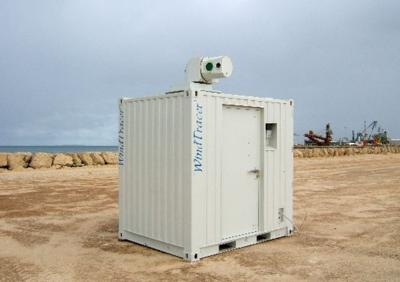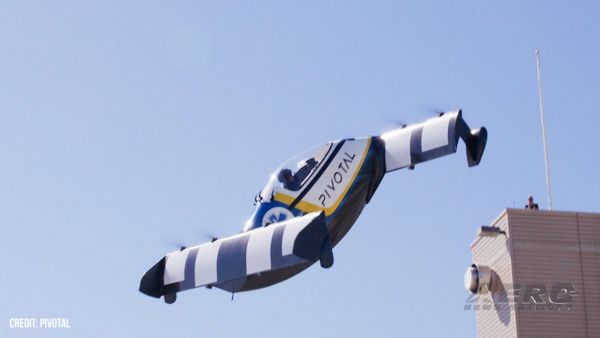Mon, Feb 18, 2013
Lidar Measurements Led To Reduction In Diagonal Spacing On Adjacent Runways
The FAA has applied hundreds of thousands of research measurements made by Lockheed Martin's WindTracer Doppler lidar to redefine flight rules, achieving major efficiency enhancements at U.S. airports.

The FAA granted approval for San Francisco International Airport (SFO) and Newark Liberty International Airport (EWR) to conduct dependent arrival operations on their closely spaced parallel runway (CSPR) pairs. SFO and EWR have joined a growing list of airports with CSPR geometries that are authorized by the Federal Aviation Administration to conduct a wake turbulence mitigation procedure for CSPR operation, known as FAA Order JO 7110.308 – Ch3. The safety assessment is enabled with significant amount of wake measurement research using WindTracer lidars.
The assessment permits reduced diagonal spacing of 1.5 nautical miles on adjacent runways relative to the leading large- and small-category aircraft with runway spacing less than 2500 feet under Instrument Flight Rules. Before the implementation of 7110.308, planes arriving on two such CSPRs were required to be spaced as if they were using a single runway, which effectively closed down one of the parallel runways under instrument conditions. This procedure at SFO and EWR is expected to reduce delays significantly.
"We are thrilled that the FAA has employed our WindTracer Doppler lidars to achieve these critical improvements to U.S. air traffic rules," said Dr. Michael Margulis, director of WindTracer Programs at Lockheed Martin. "These changes will greatly increase U.S. civil airspace capacity while maintaining the highest standards of air traffic safety."
The FAA Wake Turbulence Research Program has been using WindTracer systems since 2001 at multiple airport locations to conduct wake turbulence research measurements. The databases are carefully mined to provide data-driven assessment of ongoing and future wake turbulence mitigation concepts. In addition, wind data collection is also used to develop weather-based wake mitigation solutions.
The John A. Volpe National Transportation Systems Center, part of the U.S. Department of Transportation's Research and Innovative Technology Administration, maintains and operates a fleet of WindTracers for the FAA Wake Turbulence Research Program and provides data analysis and other resource supports.
(WindTracer image courtesy Lockheed Martin)
More News
From 2024 (YouTube Edition): Hosts Smoke Demonstrator at 2024 NBAA-BACE Display For nearly 30 years, the Emergency Vision Assurance System (EVAS) has been working to raise awarenes>[...]
The Airplane Collided With Trees And Impacted Terrain On July 13, 2025, about 1106 Pacific daylight time, a Cessna 172S, N787LF, was substantially damaged when it was involved in a>[...]
“We at EAA had a close connection to him for decades, as he first met EAA founder Paul Poberezny in their mutual hometown of Milwaukee. Jim was a regular visitor to Oshkosh f>[...]
Aero Linx: Space Medicine Association (SMA) The Space Medicine Branch was founded in 1951 as the first constituent organization of the Aerospace Medical Association (AsMA). The ass>[...]
Nonapproach Control Tower Authorizes aircraft to land or takeoff at the airport controlled by the tower or to transit the Class D airspace. The primary function of a nonapproach co>[...]
 Classic Aero-TV: EVAS Raises Awareness on Cockpit Smoke
Classic Aero-TV: EVAS Raises Awareness on Cockpit Smoke NTSB Prelim: Cessna 172S
NTSB Prelim: Cessna 172S Aero-News: Quote of the Day (08.10.25)
Aero-News: Quote of the Day (08.10.25) ANN's Daily Aero-Linx (08.10.25)
ANN's Daily Aero-Linx (08.10.25) ANN's Daily Aero-Term (08.10.25): Nonapproach Control Tower
ANN's Daily Aero-Term (08.10.25): Nonapproach Control Tower



